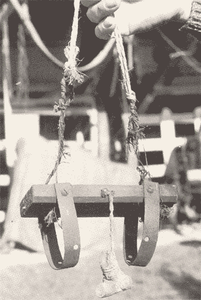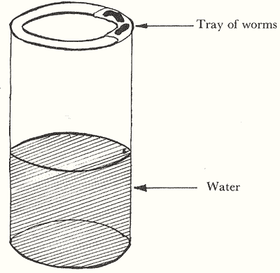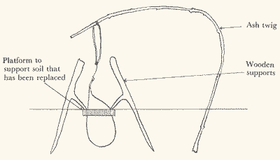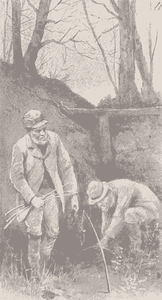Mole Traps, a brief history of mole traps and trapping.
A wooden, half barrel type mole trap.

Source: Moles & Their Control (Guy N. Smith)
Traps have served as essential tools in the age-old practice of capturing moles, with a rich history dating back centuries. Initially, these devices took the form of rudimentary wooden contraptions ingeniously coupled with twine, or cleverly designed pots strategically sunk into the ground and baited with tantalizing worms. The latter method, often referred to as a pitfall trap, relied on the mole inadvertently tumbling into the vessel and meeting an aquatic demise.
As time progressed, so did the evolution of mole traps, transforming from these early makeshift contrivances into the sophisticated tools we employ today. The advancements in manufacturing processes and the utilization of superior materials have been pivotal in the development of modern mole traps. This progression not only enhances their effectiveness but also ensures a more humane and efficient approach to mole control.
The ongoing evolution of mole traps underscores the dynamic nature of pest control technologies. In response to the ever-changing landscape, innovative designs and cutting-edge materials are continuously incorporated into the manufacturing process. This commitment to improvement ensures that mole traps remain at the forefront of effective and ethical mole management practices. As we embrace these advancements, we are dedicated to providing our customers with the most reliable and humane solutions for mole-related challenges.
Mole pitfall trap.

Source: Moles & Their Control (Guy N. Smith)
The realm of mole trapping extends far beyond the familiar metal traps equipped with springs that characterize contemporary methods. Throughout history, ingenious approaches to mole trapping have proven successful, showcasing a diverse array of techniques. One such method, vividly illustrated, is the pitfall trap. This alternative technique involves the strategic creation of a deceptive pit in the ground, cleverly concealing its presence. The unsuspecting mole, drawn by instinct or bait, descends into the trap, demonstrating the effectiveness of this historical approach. As we explore the evolution of mole trapping, it becomes evident that ingenuity has played a pivotal role in devising successful methods. While modern metal traps are prevalent today, acknowledging the diversity of historical techniques enriches our understanding of mole control and inspires a comprehensive approach to contemporary solutions.
Snaring moles.

Source: Moles & Their Control (Guy N. Smith)
In the annals of mole control, an intriguing method employed in bygone years was snaring. While this technique is no longer favored by professional mole catchers, we find it worthy of acknowledgment for its historical significance. Snaring moles represents a distinctive skill set, requiring an artful approach that, in conjunction with rat snaring, demands a considerable investment of experience, time, and patience to master and yield effective results.
Mole snaring.

Source: Rural Reflections - a brief history of traps
The art of snaring moles, a practice deeply rooted in historical pest control, is not to be underestimated. In its heyday, this method required a nuanced understanding of mole behavior and precise execution. Although contemporary professional mole catchers have shifted towards more modern, efficient and humane techniques, recognizing the historical relevance of snaring contributes to a comprehensive understanding of the evolution of mole control practices. Mastery of this skill, akin to rat snaring, demands a commitment to learning and honing the craft over time, underlining the importance of experience and patience in achieving successful outcomes.

